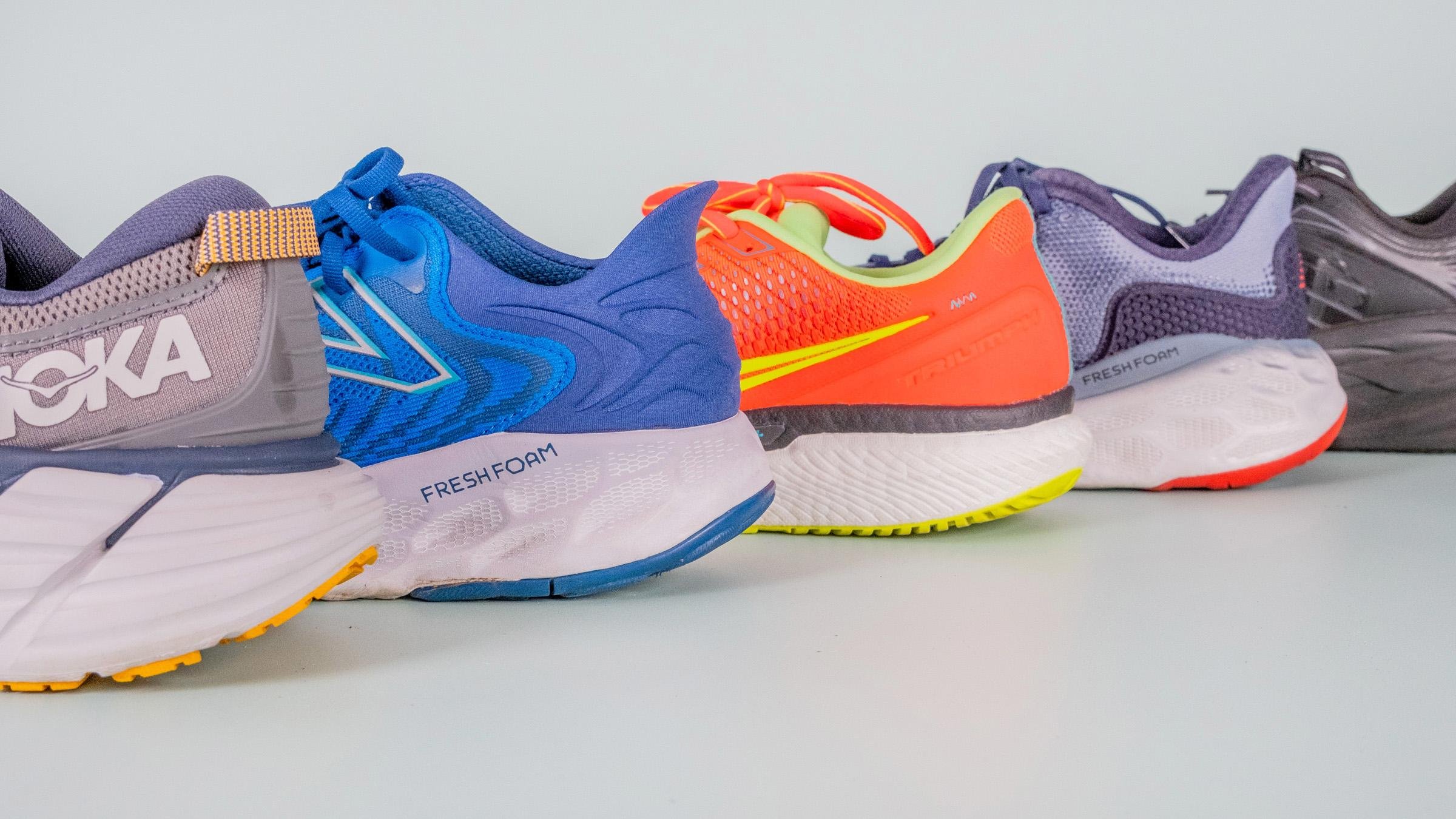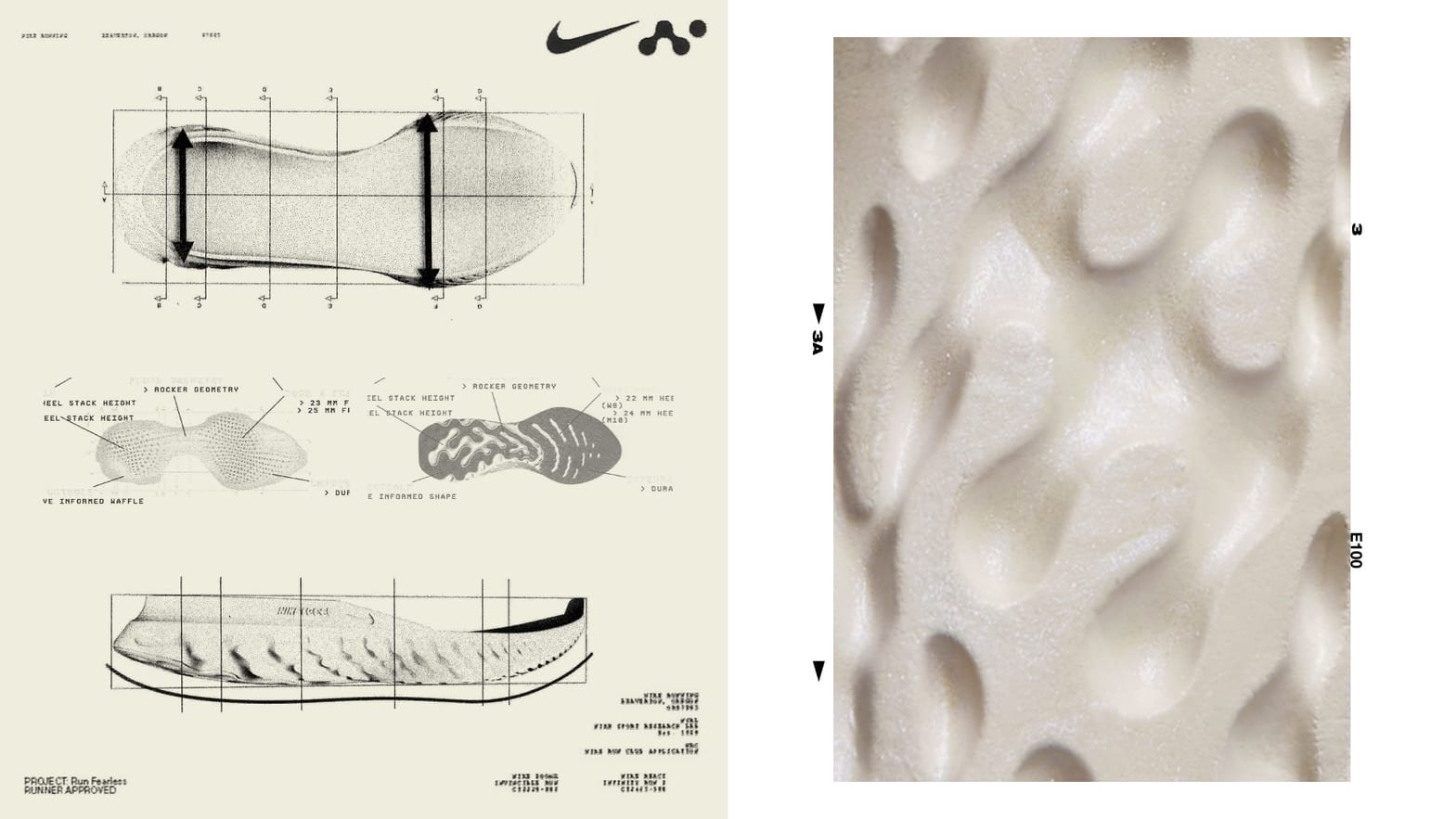Does more cushioning decrease running injuries?
Does more cushioning = reduced injuries? Logically, we would expect increased cushioning in shoes to decrease injury risk by absorbing impact forces. Runners also report benefits such as reduced fatigue during training. Is this a placebo affect or true? It also seems these days that shoes keep getting thicker and bulkier. For the older generation that misses the simplicity of low stack race shoes, you now have to go to a running store and ask for “a shoe that maybe has… a little less shoe to it?” Many shoe companies even claim that their particular model decreases the risk of injury.
Research by Benno Niggs compared impact forces during running in midsoles of different firmness (very firm, medium, and soft). Interestingly, Niggs concluded that for the general population, softer cushioned shoes make people run differently as their knee and ankle joints stiffen to compensate for softer cushioning. Imagine running on an unstable surface, your joints stiffen to increase stability. It’s almost like your body is bracing itself and preparing for impact on a soft and unstable surface. The research is inconclusive whether more cushioning is good for running and decreases injury risk. What we do know is that the human body is extremely resilient and it will adapt to different surfaces. It is more important to have a running shoe rotation of 2-3 different shoes (varying cushioning) to expose the feet to different surfaces.
Irene Davis, PhD, PT argues that maximal cushioned shoes alter our natural running form and increases the risk of injury. There is truth to that. If you take off your shoes and run across a grass field barefoot, a majority of us will land forefoot because it naturally IS the softest way to land. The minute you put on cushioned shoes, you will become a heel to midfoot striker. That’s not to say you should force yourself to be a forefoot striker. The point is, if you’ve grown up wearing maximalist shoes, your foot and ankle does not have enough strength to withstand being a forefoot striker. We don’t know for sure yet if maximal shoes will decrease injury, but we also know that switching to a minimalist shoe (if you’re not adapted to it) can increase injury risk.
In 2021, Nike announced their campaign Project: Run Fearless. I am always fascinated by the innovation team at Nike and enjoy researching their new designs and products. This project aimed to design a line of innovative running shoes that decreases the risks of common running injuries, backed by the research. Instead of adding thicker cushioning to prevent injuries, they designed shoes with a unique rocker to provide a smooth transition and a wide heel to provide stability. Nike claims that in their 2019 conducted research study of 226 men and women during a 12 week training program, there was a 52% reduction in injury rates with the Nike Infinity React and Invincible Run compared to their old stability model, the Nike Structure. I had a very difficult time finding the original study that Nike refers to, so I cannot comment on the quality of the research study.
That being said, running injuries are multifactorial. You don’t get running injuries because of the shoes you run in. The claims shoe companies make are part of marketing. People suffer from running injuries because of muscle imbalances, running gait, nutrition, overtraining, and poor recovery. Shoes are just one piece of that puzzle. Diversify your running shoe rotation and build enough internal strength where you can literally wear any type of running shoe without being prone to injury.
So how does one go about strengthening their lower extremities?
Make sure you have good ankle and big toe mobility.
Learn to use your big toe - it is responsible for 80% of foot stability. Imagine using a pair of scissors without your thumb?
Bulletproof your lower legs: soleus, gastroc, post tib, peroneals, and tibialis anterior! Can’t go wrong with strength.
Improve single leg stability (it all starts from the core & hips)
References:
Altman AR, Davis IS. Barefoot running: biomechanics and implications for running injuries. Curr Sports Med Rep. 2012 Sep-Oct;11(5):244-50. doi: 10.1249/JSR.0b013e31826c9bb9. PMID: 22965347.
Baltich J, Maurer C, Nigg BM. Increased vertical impact forces and altered running mechanics with softer midsole shoes. PLoS One. 2015 Apr 21;10(4):e0125196. doi: 10.1371/journal.pone.0125196. PMID: 25897963; PMCID: PMC4405580.
Nigg BM, Baltich J, Hoerzer S, Enders H. Running shoes and running injuries: mythbusting and a proposal for two new paradigms: 'preferred movement path' and 'comfort filter'. Br J Sports Med. 2015 Oct;49(20):1290-4. doi: 10.1136/bjsports-2015-095054. Epub 2015 Jul 28. PMID: 26221015.



